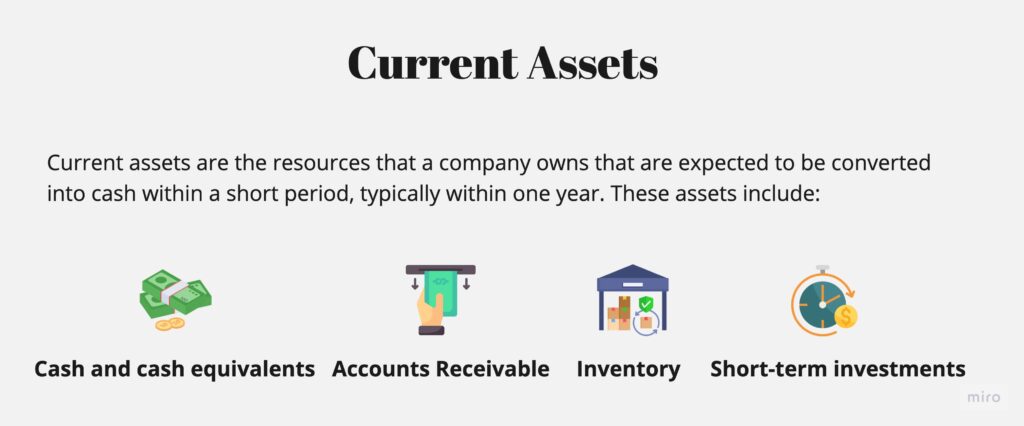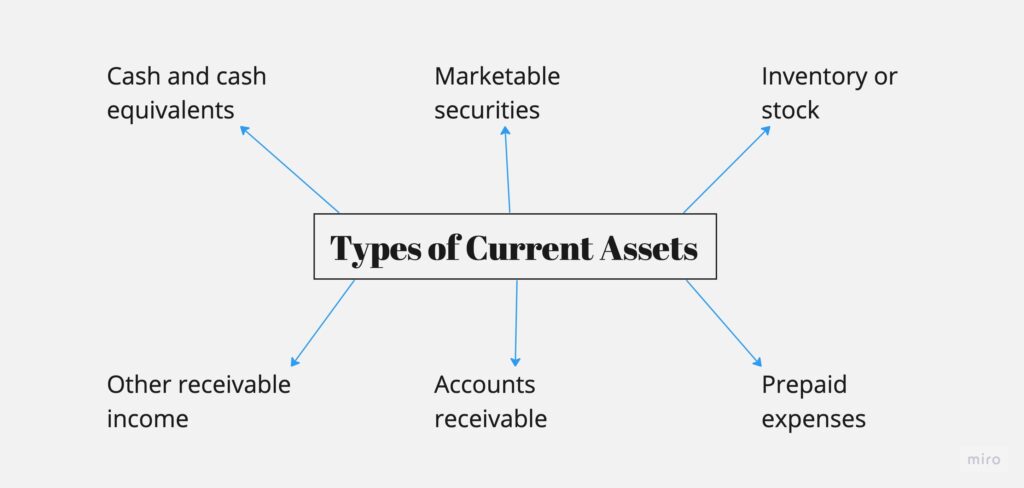A company’s assets can directly impact the liquidity of a firm. If a firm has a large amount of money tied up in illiquid assets like land, buildings, etc., it may find it difficult to meet its short-term liabilities and financial obligations.
Now, based on liquidity, a company’s assets can be classified into current assets and non-current assets. Let’s read what current assets are.
What are current assets?

A current asset is referred to as a company’s asset that can be easily sold, consumed, or expended and converted into cash or cash equivalent within one year or within the normal operating cycle, whichever is longer through business operations.
In the financial statements, these assets are separately recorded in the balance sheet under the “Current Assets” head and are usually listed in order of liquidity. Current assets typically consist of cash and cash equivalents, accounts receivable, temporary investments, inventories and prepaid expenses.
Return on equity: Highlights
- Current assets are company assets that can easily be liquidated within a year or the normal operating cycle to help conduct business.
- Current assets include cash or cash equivalents, stock in trade or inventory, accounts receivable, marketable securities, prepaid expenses etc.
- Maintaining an appropriate balance of current assets and current liabilities might signal to lenders and investors that the company has the ability to meet its short-term obligations.
- Current assets are valuable to the firms because they may be utilised to support day-to-day operations.
Key components of current assets
Below mentioned are some key components of current assets:
- Accounts receivable
Accounts receivable are owned by a trader or vendor for goods and services delivered but not yet paid for.
- Inventory
Inventory includes raw materials and finished products. However, they must be reviewed before being added to a company’s balance sheet. Sometimes an inventory or goods may be illiquid or cannot be easily converted to cash. This factor depends on the product as well as the industry.
- Prepaid expenses
Any expenses paid for in advance classify as current assets. They are advance payments for goods and services that a business or a firm will utilise/receive in the future. For instance, any payment made to insurance companies or contractors before its due can be considered a prepaid or advance expense.
- Cash and equivalents
Any ready liquid assets like currency, cheques, and bank accounts can classify as cash and equivalents.
Types of current assets

Many assets can be classified under current assets. Below are the types of current assets:
- Cash and cash equivalents
Companies can use cash or cash equivalent to supplement their day-to-day requirements. Marketable securities, foreign currency, cheques, and petty cash are a few examples of cash and cash equivalent.
- Accounts receivable
Accounts receivable can be defined as the balance of money due on services or goods provided. Debtors and accounts receivable directly impact future inflows and a company’s capacity to pay its liabilities.
- Prepaid expenses
Companies frequently pay in advance to ensure they receive the necessary service or product from third parties to run their business smoothly.
- Inventory or stock
All cash flow and sales are affected by inventory availability and demand. Inventories may include raw materials, products in progress, or finished products, depending on the nature of the firm and demand.
- Marketable securities
Marketable securities are those that frequently trade on public markets. There are two types of marketable securities: equity securities and debt securities.
- Other receivable income
Other inflows are included in current assets. However, the calculation must be entered into the book within one year. Tax refunds can be an apt example here.
Current assets formula
The current asset formula is represented as –
Current assets = Cash and cash equivalents + Accounts receivables + Inventory + Marketable securities + Prepaid expenses + Other liquid assets
Note: All above-mentioned components can be liquidated in a year or less.
Current assets calculation example
Consider the following example for calculating the current assets of a corporation called XYZ Ltd. The data from XYX Ltd for the computation of current assets for the fiscal year ending 31st March 2023 is shown in the table below.
| Current assets | Value |
| Cash and cash equivalent | Rs. 10,00,000 |
| Accounts receivable | Rs. 4,00,000 |
| Inventory and trade | Rs. 1,20,000 |
| Marketable securities | Rs. 3,30,000 |
| Prepaid expenses | Rs. 60,000 |
So, using the above method, XYZ Ltd’s current assets will be:
= Rs. 10,00,000+4,00,000+1,20,000+3,30,000+60,000 = Rs. 19,10,000
Conclusion
Current assets imply those assets that can be easily sold or expended within a year. Managers, analysts, and investors use a company’s current assets, in contrast to current liabilities, to evaluate whether the company has adequate liquidity to cover its short-term obligations. Maintaining an ideal balance of current assets indicates that the company has adequate cash on hand. Understanding the concept of the current asset is critical because it is a vital indicator of a company’s short-term financial health.



